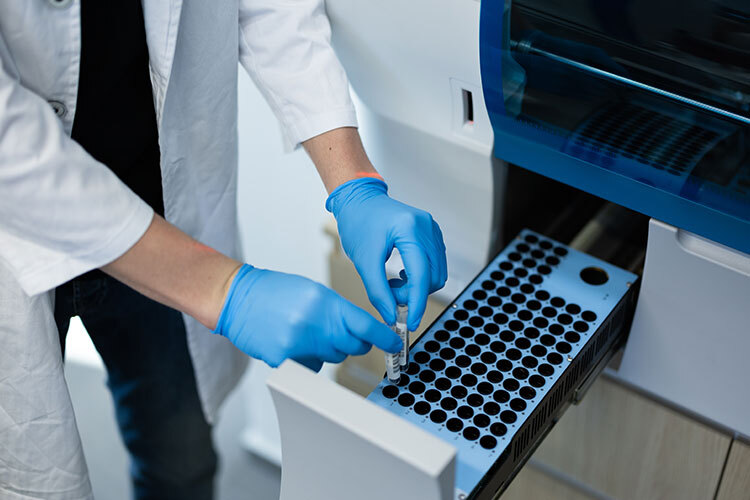Just like us, plants get stressed by changes in their environment, but (instead of complaining) their defense mechanism is to produce different molecules that, when consumed by humans, have beneficial properties for our health.
Inducing stress in fruits and vegetables is the basis of research focused on developing technologies to increase their health potential.
“After the harvest, if you generate stress in the plant, it will have a physiological response because it’s still alive and has metabolic activity,” says Daniel Jacobo, a researcher at the Institute for Obesity Research at Tec de Monterrey, in an interview with TecScience.
Traditionally, biofortification –a process by which the nutrient density of crops is increased– has been used to grow things like vitamins and minerals. Still, Jacobo and his group have sought to apply it to increase the amount of nutraceutical molecules.
Unlike the term nutritious, which refers to the presence of basic nutrients such as proteins, carbohydrates, fats, vitamins, and minerals in food, nutraceutical refers to molecules that provide benefits beyond nutrition, such as having medicinal properties to combat diseases.
By increasing their content of nutraceutical molecules, these foods could help treat chronic diseases such as cancer, diabetes, and obesity.
<!–[if lte IE 8]>
<![endif]–> hbspt.cta.load(5092991, ‘2c58ad21-0b81-4245-a63c-00792bd02bdf’, {“useNewLoader”:”true”,”region”:”na1″});
hbspt.cta.load(5092991, ‘2c58ad21-0b81-4245-a63c-00792bd02bdf’, {“useNewLoader”:”true”,”region”:”na1″});
The Healthy Potential of Stressed Vegetables
To stress vegetables, the researchers have resorted to different mechanisms, which can be applied at an industrial level and directly in our homes.
In the industrial field, they have used UV light, containers with high concentrations of oxygen, and high hydrostatic pressures to induce stress in the tissue of these fruits and vegetables and boost the production of antioxidants and anti-inflammatory and anti-cancer molecules.
According to the researcher, they have observed cases where the concentration of these compounds can be increased by up to 2000%.
Another method they have studied and has similar effects to industrial ones is grating them. “With that simple strategy, you can have a much higher amount of antioxidants,” says Jacobo.
The trick to making it work is to rinse the vegetables before grating them, store them for a few minutes in the refrigerator, and use them like that, without rinsing, to eat them or prepare a dish.
“If they are washed after grating, you will eliminate some of the signaling molecules that tell the plant it is stressed,” explains Jacobo.
These processes can be used as an alternative to genetic engineering, where plants are modified from the seed to obtain desirable qualities. Stressed vegetables can be consumed directly or used to transform them into foods such as flour, drinks, sausages, or baby food.
They can also serve as raw materials to create healthy processed foods. “If you work from a careful design, you can obtain processed foods that have a beneficial contribution to health,” he says.
In association with the company Sigma Foods, Jacobo and his group created an ingredient, which they named Zanafort, made from stressed and pulverized carrot, which has a high content of vitamin A, fiber, carotenoids, and chlorogenic acid –a molecule with anti-inflammatory action– and has been incorporated into foods such as sausages or tortilla flour.
Biofortified Foods to Treat Cancer and Obesity
Among the molecules generated by plants when faced with stress are glucosinolates – generated mainly by plants such as cauliflower, broccoli, kale, and cabbage – which, when ingested by humans, can induce the death of cancer cells. Thus, they have the potential to help in the treatment of colorectal, prostate, and breast cancer, as well as heart attacks.
To find out if the observed benefits are due to these compounds, Jacobo’s group has resorted to in vitro cellular studies and animal models.
In the laboratory, they have cell lines of adipocytes -or fat cells- and tumor cells from different types of cancer to which they apply extracts of these biofortified foods and observe if they have any effect compared to a control.
Recently, in an animal model in which obesity was induced with a high-fat diet, they used biofortified carrots and observed that their fat accumulation was decreased compared to a control group that was administered carrots that were not treated.
This could be because the compounds generated by stressed carrots can induce thermogenesis, a cellular process that leads to fat burn.
In addition, they have found that some of the compounds generated by different biofortified vegetables can have anti-inflammatory properties and decrease the accumulation of abdominal fat associated with metabolic syndrome.
“We have seen that the consumption of stressed vegetables can change the way fat is accumulated in our models to a healthier way,” says Jacobo.
To get to where they are, Jacobo and his group have carried out, for a decade, basic science research to understand in depth how plant cells respond to stress, which genes are activated, and how the production of compounds beneficial to humanity occurs.
“It’s a lot of basic research that is then translated into these tangible applications; It required a lot of teamwork, many master’s and doctoral students,” he explains. One of their most important collaborations has been with Luis Cisneros-Zevallos at Texas A&M University.
In the future, Jacobo and his group seek to conduct clinical trials in humans to test whether these foods can improve our health while continuing to generate basic research and partnering with the food and pharmaceutical industry to create products with the potential to help.
“We want to continue proving their benefits, informing the population and the industry, to help improve the health of Mexico and the world,” he says.















